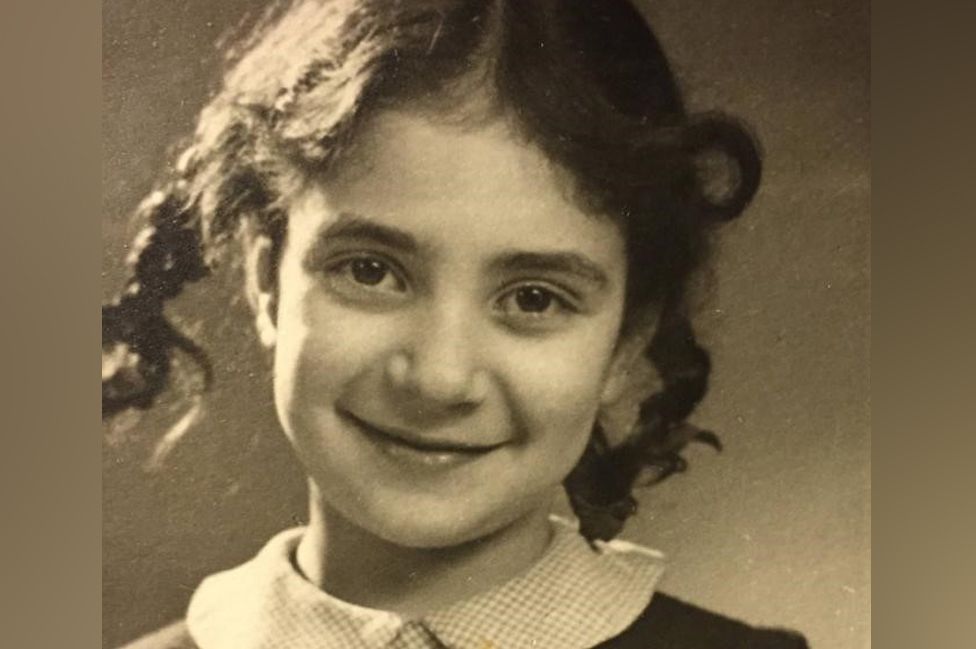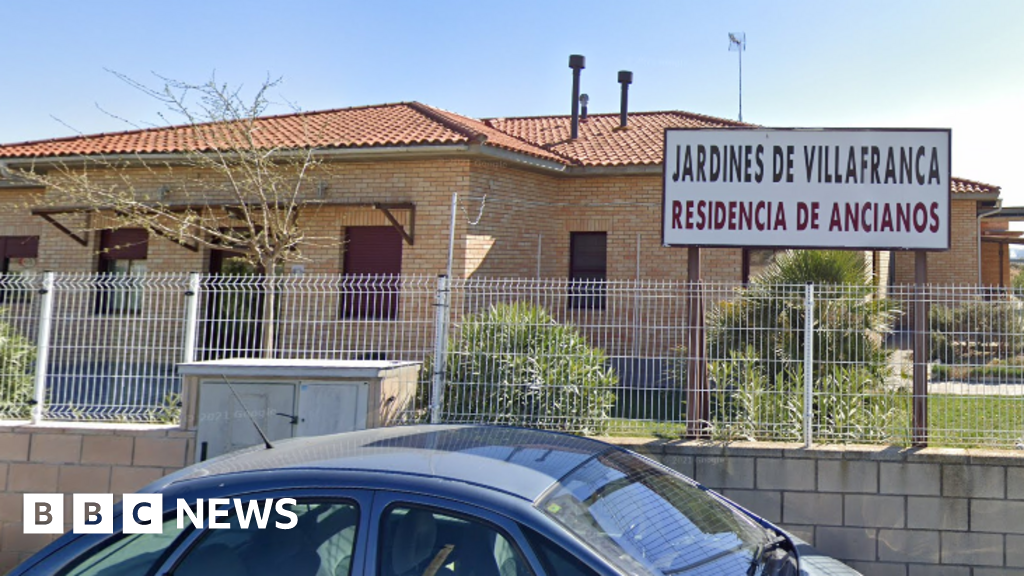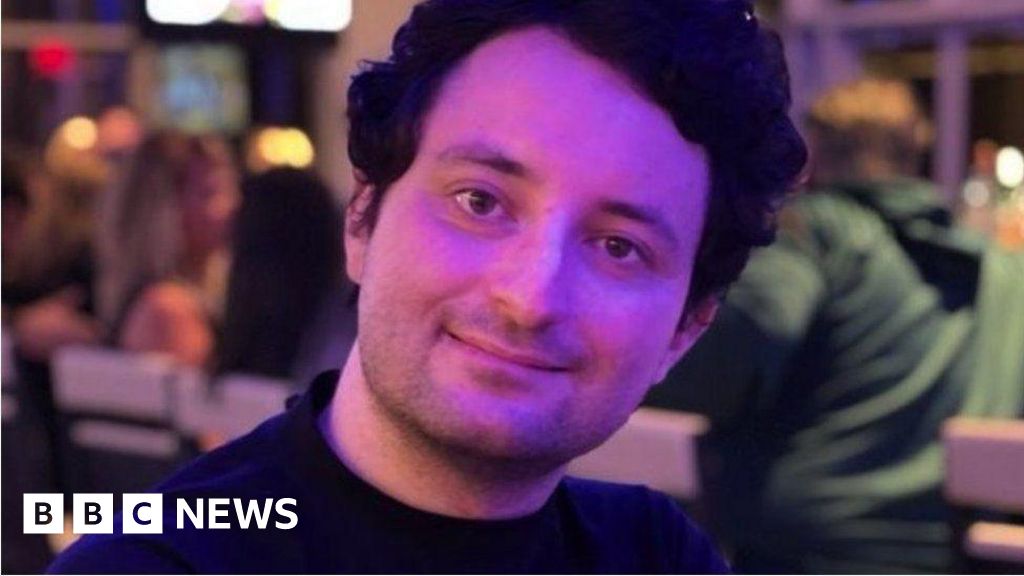ARTICLE AD BOX
 Image source, Sotheby's
Image source, Sotheby's
Dolly, granddaughter of Siegbert Stern
A major work by Russian painter Wassily Kandinsky could fetch a record price at auction in London in a few weeks. But behind the sale is one family's story of tragedy and heroism, all laid out in an unpublished memoir, writes Stephen Smith.
It begins with a little girl, seven years old, hiding in a secret room.
A woman tells her, "You're quiet, very quiet, you can't make a sound, no one can know you're here, no one! Do you hear me?" The woman is the girl's nanny, who looked after her with her mother and grandmother at their house.
"If you make noise and someone hears it, we could all be killed by the Germans. Did you hear me right?" The girl doesn't know that she won't see her house again for years and that she will never see her mother or grandmother again.
She doesn't know this place, the nanny's home, nor the nanny's family. But she will spend the next two and a half years here, hidden in this small room, with no company except for a toy elephant called Jumbo, and all because of a deadly secret.
The little girl, Dolly, is Jewish. It is 1943 in Nazi-occupied Amsterdam.
Dolly's story has remarkable parallels with the famous wartime history of Anne Frank, and indeed Anne is hiding in another house less than two miles away at the same time. The two girls are unknown to each other and never meet.
Anne and her family are captured in August 1944 and sent to Auschwitz. Dolly's mother and father and grandmother are also murdered in Auschwitz, but she survives.
Image source, Sotheby's
Image caption,Dolly's mother and father Luise and Herbert
Anne's account of living in hiding, The Diary of a Young Girl, becomes one of the most important documents of the Holocaust. Dolly's account of how she came to survive the war is contained in an unpublished memoir but her story is connected to a work of art rather than a book.
It's a groundbreaking modernist masterpiece, in fact, and it's at the centre of a campaign to establish the claims of Dolly's family to an art collection which they lost in the war.
The painting goes on sale in London in a few weeks' time and could fetch more than £35m ($42m), a world record for the artist who made it. They say that every picture tells a story and this one tells the story of Dolly's family, who they were and what happened to them.
The acclaimed work is Murnau mit Kirche II (Murnau with Church II) painted in 1910 by the Russian master Wassily Kandinsky.
It once hung in the elegant villa where Dolly's grandparents lived in Potsdam, outside Berlin. An old family photograph shows that the Kandinsky had pride of place in the dining room of Siegbert and Johanna Margarete Stern.
A hundred years ago, they created a successful textile business together. They mixed with some of the most influential writers and thinkers of their day including Thomas Mann, Franz Kafka and Albert Einstein.
Image source, Sotheby's
Image caption,Kandinsky painted it after visiting the mountain village of Murnau, Bavaria
The couple appreciated art and were broad-minded in their tastes. Their collection ranged from Dutch old master paintings to Renoir and bold newcomers including Munch and Kandinsky. Siegbert's will includes a record of more than a hundred art works.
Next to the Kandinsky in his will he wrote "Landschaft", German for landscape. The Sterns were also active in the Jewish community. In 1916 they helped to set up an organisation to assist Jews who had fled Eastern Europe and were living in poverty in Germany.
With the rise of the Nazis, the Sterns and families like them became targets for persecution. After Siegbert died in 1935, life became increasingly difficult. Some of the children had already left for the Netherlands by this time and Johanna Margarete followed, taking some of her furniture and paintings with her.
Like many Jewish families, the Sterns raised funds by selling off precious artworks at cut-throat prices to unscrupulous dealers.
In 1941, Johanna Margarete was declared a stateless person by the Nazis. They held out the tantalising prospect of freedom to her: she could have a visa, allowing her to leave Holland with her family, in exchange for a painting by the French artist Henri Fantin-Latour.
Image source, Sotheby's
Image caption,The Stern Villa in Potsdam
But it was a trick. She handed over the picture but there was no visa.
Johanna Margarete went into hiding but she was seized in 1943, as were Dolly's parents. In her memoirs, Dolly describes a desperate scene as her mother and father entrust her into the care of her nanny, Anna, while doing their best to shield her from the horror of what is about to happen.
"It was late at night, I was already asleep, when my mother's soft voice woke me up. 'Dollychen, you have to get up now. It's not morning yet.' She came and sat on the bed with me and so did my father. They said they had to leave for two weeks, as the Germans wanted that, but then they would come back.... the doorbell suddenly rang very loud and long and my father opened the door. Three officers from the Grüne Polizei [Nazi police force] burst in, their boots making a loud noise of clicking and stamping. They shouted all sorts of orders loudly and roughly for everyone to hurry up: 'Schnell, schnell, sonst schiessen wir [(Quick, quick, otherwise we shoot]'. I hid behind Anna and was scared, very scared."
Dolly's parents were taken away. It was the last she would ever see of them. The next day she made the perilous journey across the city alone to Anna's house. The Nazis forced Jews like Dolly to wear a yellow star but Anna had unstitched it from Dolly's jacket and told the girl that from now on she was to call her Aunty. Part of Anna's house served as a doctor's consulting room and it had a tiny, hidden annex.
This became Dolly's home for the next 30 months.
Image source, Sotheby's
Image caption,Kandinsky's painting on the wall of the dining room at Villa Stern
She had two books, a child's Bible and a collection of fairy tales, which she read and reread. There was a faded poster on the wall which said "God sees all" and Dolly wondered how he could see everybody, even her.
"On the evenings when there were also consultation hours, I had to sit in the dark in autumn and winter. I often stretched out on the floor and counted the feet of the waiting patients through the bottom crack of the door."
Her solitude was punctuated by the terror of police raids. Anna hid Dolly beneath the floorboards or bundled her into a cupboard under a sink. She was "made invisible" under dusters and mops.
"When the German officers were inside the kitchen, Anna played the innocent. She made German jokes and wound them around her finger, but as soon as they were gone she collapsed like a wet mop and shivered all over."
For a little girl, one of the hardest things was staying perfectly quiet, so when the Allies finally liberated Amsterdam in 1945 and Dolly could come out of hiding, the exhilaration and relief of it was expressed for her in everyday sounds.
"Like many others I had no shoes. This problem was solved by wooden clogs that were suddenly sold everywhere. A wooden sole and two straps at the top. I loved the clattering. I was allowed to be there and everyone could hear that and was allowed to know that. I was allowed to live again, completely live."
Dolly lived into her late 70s, in fact, and enjoyed her life, to judge by her memoir.
Image source, Sotheby's
Image caption,Dolly in later life
Records of Holocaust survivors include Dolly, born in 1935, who "went into hiding" during the war.
Official Dutch documents show that she lived with her nanny Anna during occupation. As far as Dolly's surviving relatives are aware, no one is still alive from that household and the BBC has not been able to separately verify Dolly's account of her experiences.
Younger members of her family took on the task of researching the whereabouts of the missing Stern art collection. In 2013, they discovered that there was a Kandinsky in a museum in Eindhoven. It had been there since 1951. Could it be the one from the Potsdam villa?
Curators took a fresh look at it and found the word "Landschaft" scratched on the stretcher at the back of the painting. It was the same term that Siegert had used to record the Kandinsky in his will, and the handwriting was a good match for his.
Dolly died before the find could be confirmed, but she knew that her family were on the trail of the lost masterpiece.
After a lengthy campaign, it was finally handed to the family. It will be sold at Sotheby's in London next month, when it is expected to reach the highest price ever achieved by the artist.
Image source, Sotheby's
Image caption,Siegbert and Johanna Margarete Stern
The proceeds will be divided between the Sterns' 13 surviving heirs and will go towards further research into the fate of their paintings that remain at large.
Murnau mit Kirche II is a highly significant work in art history, harking back to what the Russian had absorbed from Cezanne and Van Gogh in Paris, but also looking ahead to the influence he would have over Jackson Pollock, Willem de Kooning and others in New York.
Most of Kandinsky's early paintings are already in museum collections and it's rare for one as special as this to come onto the market. Art historians say that the painter had the condition, or gift, of synesthesia: he could look at a colour and hear music.
It seems fitting that his vivid lost masterpiece should be linked to the story of a little girl who found joy in the everyday music of footsteps in liberated streets.
Dolly's family did not want to use her surname in this article because they want to protect their identity.
Murnau mit Kirche II by Wassily Kandinsky will be auctioned at Sotheby's, London, on 1 March.
Stephen Smith is a writer and broadcaster.

 1 year ago
41
1 year ago
41








 English (US)
English (US)